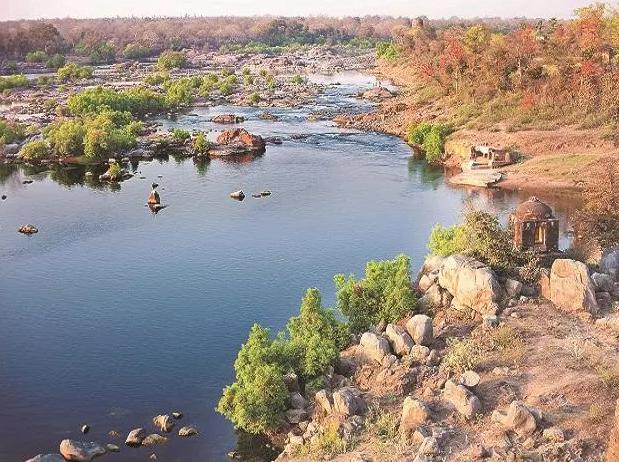Panna’s Success Story In This Report
An interesting tiger study released by the field director of the PTR, Uttam Kumar Sharma, talks about various aspects of the rise in the population of the big cats in Panna, the geographical regions where the tiger numbers are increasing, the dispersal pattern of the tigers in Panna Landscape and the impact of a highway 39 criss crossing the core area of the park deterring tigers to cross the road. “Tigers are continuously moving across the boundary of PTR in to the Panna Landscape. There is not only outward movement, it has been observed that tigers which were earlier considered disperse in to landscape have returned back to the PTR”, the study said. Besides the dispersal, the tigers are exploring new areas within PTR boundaries, which were earlier having “no presence of tiger.” The report gives example of five tigresses P222, P641, P642, P643 and P433-22 seen for the first time.”
They have given birth and rearing cubs in the forest ranges of PTR West of Ken river, in Chhatarpur district”, the report said. Recently, tigress P141-12 with her cubs was also seen in areas west of Ken river in the core area of Chandranagar range. Her movement was earlier reported in areas East of Ken river in the Core area of Madla Range. “Presently, at least 8 adult tigers along with 10 cubs are present in Forest Ranges, West of Ken River within the boundary of PTR”. This number will grow further as lots of habitat improvement work has been done in these areas assessing their potential in becoming good tiger habitats, the report said. But there is bad news attached to this piece of information. The tiger numbers may be going up, they may not last longer as the most of the submergence from KBLP would happen in this area only. The PTR study predicts population of tigers in Panna to be somewhere 84 to 86 by the end of 2022. The number was zero in 2009 before the tiger reintroduction programme was started.The next blog will carry the full report of Panna tiger reserve.
River Project To Submerge Critical Tiger Habitat
As the construction of large dams for the interlinking of rivers to solve the irrigation and drinking water problems created potential threats to the apex predator, herbivores and the overall biodiversity Panna, the Current Science study titled “The inter-linking of rivers and biodiversity conservation: a study of Panna Tiger Reserve, Madhya Pradesh, India” said there are examples within Bundelkhand, on ways to manage the water crisis. This region is spread across the two states of Uttar Pradesh (UP ) and Madhya Pradesh (MP) where the PTR is located, The total area submerged would be 86.50 sq km, of which 57.21 sq km lies within Panna Tiger Reserve, the study said. This will account for 65.50 per cent of total submergence. The land use land cover and vegetation data shows that tree density and diversity are comparatively higher in the submerged area.The Union Cabinet December 8, 2021, approved the funding and implementation of the Ken-Betwa inter-linking of rivers project at a cost of Rs 44,605 crore.
Though many statutory permissions are required to be obtained, the government in Madhya Pradesh has started the survey of the proposed submergence areas and notices are served to villagers. Union Information and Broadcasting minister Anurag Thakur had said the river linking project was deemed a ‘national project’ and the Centre will take care of 90 % of the project’s cost.The remaining 10 per cent cost will be shared by UP and MP. The project spreads across the districts of two states — Jhansi, Banda, Lalitpur and Mahoba districts of UP and Tikamgarh, Panna and Chhatarpur districts of MP — through a 230-km-long canal.
Banner Pic: Panna Tiger Reserve




